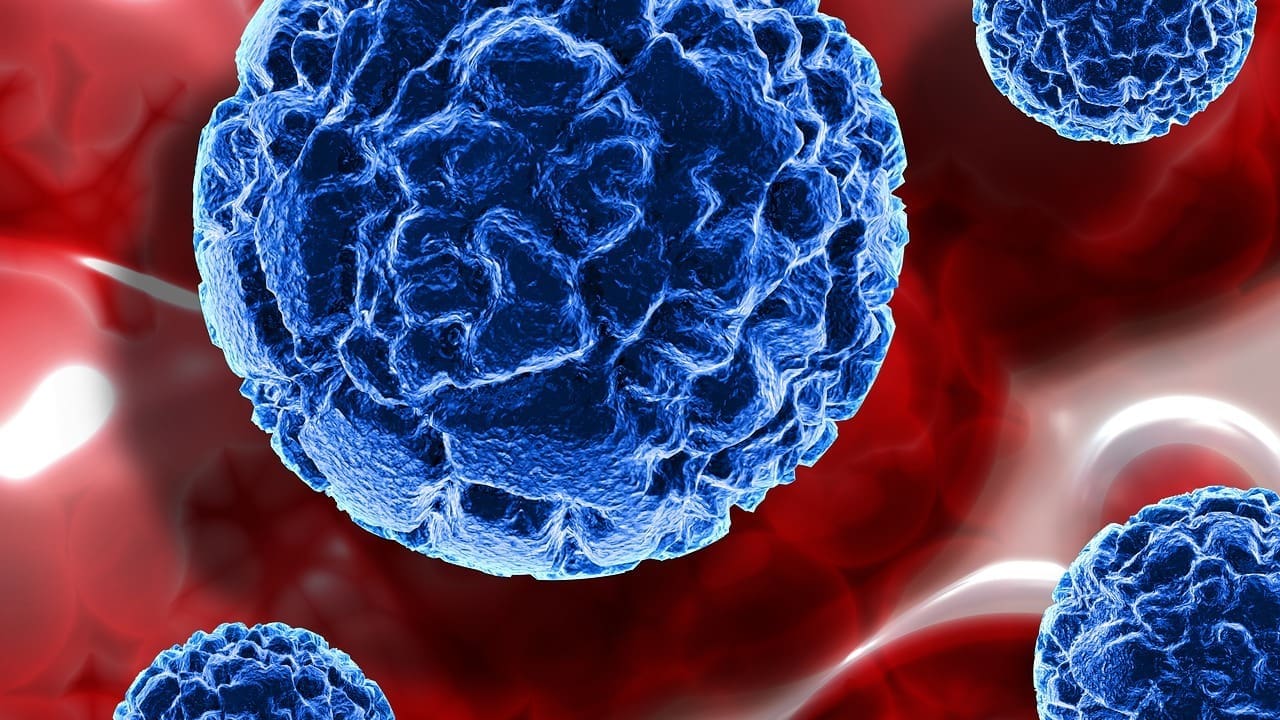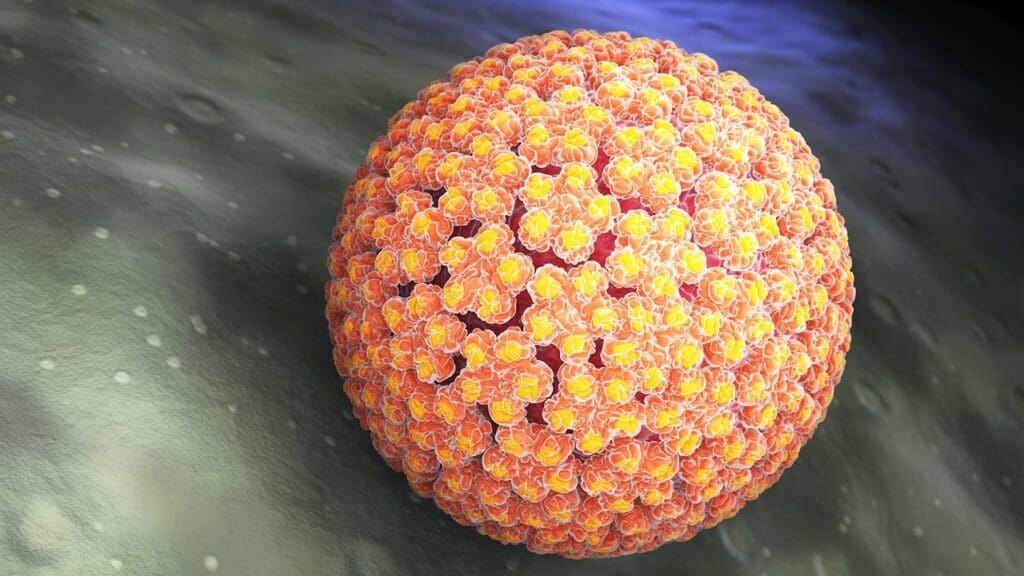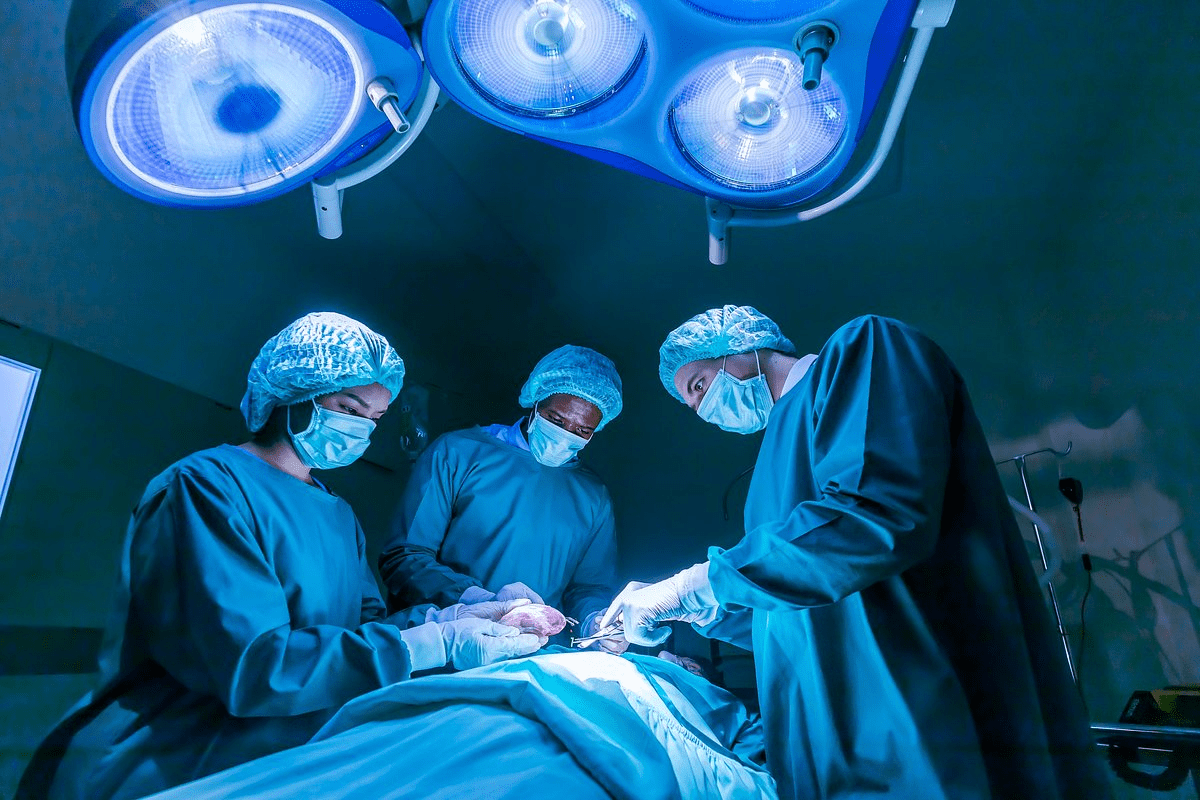Last Updated on November 26, 2025 by Bilal Hasdemir

Diffuse large B-cell lymphoma (DLBCL) is a fast-growing type of non-Hodgkin lymphoma. It’s the most common type, making up about 30-40% of cases. At Liv Hospital, we are committed to providing expert care and the latest medical advancements for patients with DLBCL.
Knowing the key facts about DLBCL is important for both patients and doctors. We will look at what DLBCL is, how common it is, its symptoms, how it’s diagnosed, and treatment options. We’ll also talk about the latest advancements and our full care approach.
Key Takeaways
- DLBCL is the most common subtype of non-Hodgkin lymphoma.
- It is characterized by its aggressive nature and rapid progression.
- DLBCL can present in lymph nodes or extranodal sites.
- Symptoms include lymph node enlargement, fever, night sweats, and weight loss.
- Liv Hospital offers expert care and the latest medical advancements for DLBCL patients.
What Is Diffuse Large B-Cell Lymphoma?
Diffuse Large B-Cell Lymphoma (DLBCL) is a serious type of cancer. It affects B cells, which are key to our immune system. Knowing about DLBCL helps us understand its impact on patients.
Definition and Classification of DLBCL
DLBCL grows quickly and is a type of aggressive large B cell lymphoma. It’s divided into two main types: germinal center B-cell and activated B-cell. Knowing which type a patient has helps doctors plan their treatment.
The World Health Organization (WHO) helps classify DLBCL. They look at its appearance, how it acts, and its genes. This helps doctors understand and treat DLBCL better.
- Germinal center B-cell-like (GCB) subtype
- Activated B-cell-like (ABC) subtype
These subtypes have different outlooks. GCB usually has a better chance of recovery than ABC.
Prevalence and Epidemiology
DLBCL is a common cancer, making up 30-40% of non-Hodgkin lymphoma cases. It’s more common in some places and groups. Knowing who gets DLBCL helps plan health care better.
Studies have found several risk factors for DLBCL. These include:
- Age: It’s more common in older people.
- Immunosuppression: People with weak immune systems are at higher risk.
- Infections: Some infections, like HIV, raise the risk of DLBCL.
Understanding these risks helps us meet the needs of those with DLBCL. This can lead to better care and outcomes.
Understanding Large Cell B Cell Lymphoma Pathophysiology
To understand DLBCL, we must explore its pathophysiology. This includes the cell of origin and genetic changes. DLBCL’s pathophysiology is complex, with B cells transforming into cancer cells through genetic and molecular alterations.
Cell of Origin and Malignant Transformation
The cell of origin in DLBCL is a mature B cell. It becomes cancerous due to genetic and epigenetic changes. Recent studies have shown that DLBCL can come from germinal center B cells or activated B cells. Each type has its own genetic and clinical features.
Knowing the cell of origin is key. It affects the prognosis and how well a treatment works. For example, DLBCL from germinal center B cells usually has a better outlook than that from activated B cells.
Genetic and Molecular Mechanisms
The genetic and molecular basis of DLBCL is complex. Recent research has found different genetic subtypes of DLBCL. These are defined by specific mutations and gene expression patterns.
- Key genetic alterations include mutations in MYC, BCL2, and BCL6 genes. These genes are important for cell growth, survival, and differentiation.
- Molecular mechanisms involve the activation of signaling pathways like NF-κB and PI3K/AKT. These pathways help the cancer cells grow and survive.
Grasping these genetic and molecular mechanisms is essential for creating targeted treatments. We are moving towards personalized treatments for DLBCL. This approach is based on each patient’s unique genetic and molecular characteristics.
Recognizing DLBCL Symptoms and Warning Signs
Knowing the warning signs of DLBCL can greatly improve patient outcomes. It’s important to recognize the common symptoms of this aggressive lymphoma.
Lymph Node Enlargement and Extranodal Manifestations
DLBCL often shows up as quickly growing, painless lumps in lymph nodes or other parts of the body. The first sign is usually lymph node swelling in places like the neck, armpits, or groin. It can also show up in organs like the stomach, skin, or brain.
When DLBCL affects other organs, it can cause different symptoms. For example, stomach problems might lead to pain or blockages. Brain involvement can cause nerve issues.
B Symptoms: Fever, Night Sweats, and Weight Loss
B symptoms like fever, night sweats, and unexplained weight loss are common in DLBCL. They show the body’s fight against the lymphoma.
Seeing B symptoms early is key for better treatment and outlook. It’s important for both patients and doctors to spot these signs quickly.
| Symptom | Description | Clinical Significance |
|---|---|---|
| Lymph Node Enlargement | Painless swelling of lymph nodes | Often the first noticeable sign of DLBCL |
| Fever | Unexplained high temperature | Indicates systemic involvement and possible aggressiveness |
| Night Sweats | Recurring sweats at night | Linked to advanced disease and poor prognosis |
| Weight Loss | Unexplained loss of body weight | Shows advanced disease and metabolic issues |
Spotting these symptoms and warning signs early is vital for treating DLBCL effectively. Knowing the signs helps patients get medical help fast, boosting their treatment success.
DLBCL Lymphoma Subtypes and Their Clinical Implications
DLBCL is not just one disease. It’s a group of lymphomas with different types. Each type has its own genetic and clinical features. These differences affect how well the disease responds to treatment and the patient’s outlook.
Knowing about these subtypes is key to finding the right treatment. We’ll look at the main types of DLBCL and what they mean for patients.
Germinal Center B-Cell vs. Activated B-Cell Subtypes
The main types of DLBCL are germinal center B-cell (GCB) and activated B-cell (ABC). They come from different cells and have unique genetic traits.
The GCB subtype has genes found in germinal center B-cells. People with this subtype usually do better than those with ABC.
The ABC subtype has genes from activated B-cells. It tends to grow faster and doesn’t respond as well to treatment.
Double-Hit and Triple-Hit Lymphomas
DLBCL also includes double-hit and triple-hit lymphomas. These have specific genetic changes, like MYC and BCL2 or BCL6 rearrangements.
Double-hit lymphomas, like those with MYC and BCL2 changes, have a very poor outlook. For more on lymphoma and its effects, check Liv Hospital’s page on lymphoma.
It’s vital to understand these subtypes for treatment planning. They show how complex DLBCL is and why treatments need to be tailored for each patient.
Diagnostic Approaches for Aggressive Large B Cell Lymphoma
Diagnosing Diffuse Large B-Cell Lymphoma (DLBCL) needs a mix of tools and techniques. We will look at the main ways to spot this aggressive lymphoma.
Biopsy Techniques and Pathological Assessment
A biopsy is key for diagnosing DLBCL. It takes a tissue sample from a lymph node or other site. We use different biopsy methods, like excisional biopsy and core needle biopsy.
The sample is then checked for DLBCL signs, like big B cells with big nucleoli. “The accurate diagnosis of DLBCL relies heavily on the quality of the biopsy sample and the expertise of the pathologist.” Tests like immunohistochemistry and flow cytometry help confirm the diagnosis.
Imaging Studies and Laboratory Tests
Imaging studies help see how far the disease has spread. We often use PET-CT scans to check lymphoma cell activity. Blood tests, like complete blood counts and lactate dehydrogenase levels, also give important health info.
Advanced Molecular and Genetic Testing
Modern molecular and genetic tests have changed how we diagnose and treat DLBCL. Tests like FISH and NGS find specific genetic changes, like MYC and BCL2 rearrangements. These tests help choose the right treatment and predict outcomes.
By using biopsies, imaging, blood tests, and genetic tests, we can accurately diagnose DLBCL. This detailed approach is vital for better patient care in this aggressive lymphoma.
Staging and Risk Stratification in Diffuse Large B-Cell Lymphoma
To tailor treatment, accurate staging and risk assessment of DLBCL are key. Tools like the Ann Arbor staging and International Prognostic Index (IPI) help. They help doctors understand the disease’s extent and predict outcomes.
The Ann Arbor Staging System and Modifications
The Ann Arbor staging system is a common way to classify lymphomas, including DLBCL. It divides the disease into four stages. These stages are based on lymph node involvement and extranodal disease presence.
- Stage I: Involvement of a single lymph node group or lymphoid structure.
- Stage II: Involvement of two or more lymph node groups on the same side of the diaphragm.
- Stage III: Involvement of lymph node groups on both sides of the diaphragm.
- Stage IV: Diffuse or disseminated involvement of one or more extralymphatic organs, including any involvement of the liver, bone marrow, or lungs.
Modifications, like the Cotswolds modification, have been made. They include additional prognostic factors like bulk disease.
International Prognostic Index (IPI) and Other Risk Factors
The International Prognostic Index (IPI) is a key prognostic tool for DLBCL patients. It assesses the risk of disease progression and mortality. The IPI score is based on five factors:
- Age >60 years
- Elevated serum lactate dehydrogenase (LDH)
- ECOG performance status ≥2
- Ann Arbor stage III or IV
- More than one extranodal site
Patients are grouped into low, low-intermediate, high-intermediate, or high-risk categories based on their IPI score. Genetic abnormalities, like MYC and BCL2 rearrangements, also affect prognosis. For example, “double-hit” lymphomas have a worse prognosis.
A study published in Springer Link found the IPI is valuable in the rituximab era for predicting outcomes in DLBCL patients.
Accurate staging and risk stratification are vital for guiding treatment decisions in DLBCL patients. By using the Ann Arbor staging system, IPI, and other factors, healthcare providers can create personalized treatment plans. These plans address the unique needs of each patient.
Standard Treatment Protocols for Large B Cell Lymphomas
DLBCL treatment usually includes chemotherapy, immunotherapy, and sometimes radiation. The goal is to get rid of the cancer completely and improve survival chances.
R-CHOP and First-Line Therapy Options
R-CHOP is a common first treatment for DLBCL. It combines Rituximab, Cyclophosphamide, Hydroxydaunorubicin, Oncovin, and Prednisone. This mix targets cancer cells and boosts the immune system.
R-CHOP is widely used because it works well. Clinical trials show it can lead to complete remission in many patients. It’s a key part of DLBCL treatment.
- Rituximab targets the CD20 antigen on B cells, marking them for destruction.
- Cyclophosphamide and Doxorubicin are chemotherapeutic agents that interfere with DNA replication.
- Vincristine disrupts the microtubular network, essential for cell division.
- Prednisone is a corticosteroid that has anti-inflammatory and immunosuppressive effects.
Management of Relapsed or Refractory Disease
Dealing with DLBCL that comes back or doesn’t respond to treatment is tough. Salvage chemotherapy is often used to try and get a second remission. Autologous stem cell transplantation is considered for eligible patients, aiming for a cure.
The right salvage therapy depends on many things. These include past treatments, health, and the lymphoma’s details. Newer therapies, including targeted agents and immunotherapies, are being explored in clinical trials, hoping to help more patients.
Role of Radiation and Stem Cell Transplantation
Radiation therapy is used in some cases, like for tumors that are too big. It can shrink tumors and ease symptoms. Stem cell transplantation, both autologous and allogeneic, plays a key role in DLBCL treatment, mainly for those who have relapsed or not responded.
Autologous stem cell transplantation uses the patient’s own stem cells. Allogeneic uses donor stem cells. The choice depends on the patient’s disease and health.
DLBCL treatment is getting better, thanks to ongoing research. New treatments and strategies are being tested. They aim to make treatments more effective and less harsh.
Breakthrough Therapies and Clinical Innovations
Breakthrough therapies are changing how we treat DLBCL, giving patients new hope. The field of DLBCL treatment is growing fast. This is thanks to new targeted molecular therapies and immunotherapies.
Targeted Molecular Therapies and Immunotherapies
Targeted therapies are showing great promise in treating DLBCL. They focus on specific molecules that help cancer cells grow. For example, bispecific antibodies are being tested in trials. They can bind to two targets at once.
BTK inhibitors are another type of targeted therapy. They block an enzyme called Bruton’s tyrosine kinase. This enzyme is key for B-cell development and function.
Immunotherapies, like checkpoint inhibitors, are also showing promise. They help the body’s immune system fight cancer cells better. Research on immunotherapies in DLBCL is ongoing, with many trials underway.
CAR T-Cell Therapy and Future Directions
CAR T-cell therapy is a big step forward in treating relapsed or refractory DLBCL. It modifies a patient’s T-cells to attack cancer cells. CAR T-cell therapy has shown impressive results in trials, giving hope to patients with few options.
The future of DLBCL treatment will depend on improving these breakthrough therapies. Research and clinical trials will be key in finding the best ways to use these treatments.
| Therapy Type | Description | Potential Benefits |
|---|---|---|
| Bispecific Antibodies | Bind to two different targets on cancer cells | Enhanced specificity and efficacy |
| BTK Inhibitors | Block Bruton’s tyrosine kinase in B-cells | Inhibition of cancer cell growth and survival |
| CAR T-Cell Therapy | Genetically modified T-cells to target cancer cells | Potential cure for relapsed or refractory DLBCL |
Multidisciplinary Care Approaches for Diffuse Large B Cell Lymphoma Patients
Multidisciplinary care is key in managing DLBCL. It offers a complete treatment plan. At places like Liv Hospital, a team of experts works together to care for patients.
Specialized Cancer Centers
Specialized cancer centers are vital for DLBCL management. They have the latest technology and a team of experts. This team includes hematologists, oncologists, radiologists, and supportive care specialists.
Key benefits of specialized cancer centers include:
- Access to cutting-edge treatments and clinical trials
- Comprehensive care coordination among various specialties
- Expertise in managing complex cases and rare subtypes of DLBCL
Integrating Supportive Care and Symptom Management
Supportive care and symptom management are key to better patient outcomes. They address physical, emotional, and social needs during treatment.
Effective symptom management strategies include:
- Early identification and assessment of symptoms
- Personalized interventions tailored to the patient’s needs
- Continuous monitoring and adjustment of symptom management plans
Long-term Survivorship and Follow-up Protocols
Long-term care and follow-up are vital for DLBCL survivors. They help monitor late effects and ensure optimal care. A good follow-up plan includes regular assessments and screenings.
Components of a follow-up protocol may include:
| Follow-up Component | Description | Frequency |
|---|---|---|
| Physical Examination | Comprehensive physical assessment | Every 3-6 months |
| Imaging Studies | CT scans or PET-CT scans to monitor for recurrence | As recommended by the healthcare team |
| Laboratory Tests | Blood tests to monitor for late effects | Regularly as per the follow-up plan |
By using a multidisciplinary care approach, healthcare providers can give DLBCL patients the best care. This improves their treatment outcomes and quality of life.
Conclusion: Advances and Hope in DLBCL Management
We’ve seen big steps forward in treating Diffuse Large B-Cell Lymphoma (DLBCL). This disease is complex and varies a lot. New studies have found different genetic and clinical types, which affect how well patients do and how they react to treatment.
A team effort is key to managing DLBCL well. This means doctors, nurses, and researchers all working together.
Thanks to new discoveries, patients are doing better. This gives us hope for the future. At Liv Hospital, we’re dedicated to top-notch care for our patients. We’re always looking for new ways to help those with DLBCL.
Looking ahead, we’re excited about new treatments like targeted therapies and CAR T-cell therapy. These could make a big difference in how we treat DLBCL. We’re hopeful for better outcomes and look forward to the future of DLBCL care.
FAQ
What is Diffuse Large B-Cell Lymphoma (DLBCL)?
DLBCL is a fast-growing type of non-Hodgkin lymphoma. It starts from B cells.
What are the common symptoms of DLBCL?
Symptoms include swollen lymph nodes, fever, night sweats, and unexpected weight loss. These signs suggest a serious disease.
How is DLBCL diagnosed?
Doctors use a biopsy, imaging, lab tests, and genetic analysis to diagnose DLBCL. This helps plan the best treatment.
What are the subtypes of DLBCL?
DLBCL has several subtypes, like germinal center B-cell and activated B-cell types. There are also double-hit and triple-hit lymphomas, each with unique genetic and clinical features.
What is the standard treatment for DLBCL?
Treatment usually includes chemotherapy, immunotherapy, and sometimes radiation. R-CHOP is a common first-line chemotherapy regimen.
What is the role of CAR T-cell therapy in DLBCL treatment?
CAR T-cell therapy is a new hope for DLBCL patients who haven’t responded to other treatments. It offers a chance for a cure and is a big step forward in treatment.
How is DLBCL staged and risk stratified?
DLBCL is staged using the Ann Arbor system. The International Prognostic Index (IPI) helps assess risk. This information guides treatment plans.
What is the importance of multidisciplinary care in DLBCL management?
A team of healthcare professionals is key for DLBCL patients. They offer the latest treatments and support to enhance patient outcomes and quality of life.
What are the latest advancements in DLBCL treatment?
New treatments include targeted therapies, immunotherapies, and CAR T-cell therapy. These advancements are changing how DLBCL is managed, leading to better patient outcomes.
How does Liv Hospital approach DLBCL treatment?
Liv Hospital offers a full range of care for DLBCL patients. They use the latest treatments and focus on improving quality of life and patient outcomes.
What is Diffuse Large B-Cell Lymphoma (DLBCL)?
DLBCL is a fast-growing type of non-Hodgkin lymphoma. It starts from B cells.
What are the common symptoms of DLBCL?
Symptoms include swollen lymph nodes, fever, night sweats, and unexpected weight loss. These signs suggest a serious disease.
How is DLBCL diagnosed?
Doctors use a biopsy, imaging, lab tests, and genetic analysis to diagnose DLBCL. This helps plan the best treatment.
What are the subtypes of DLBCL?
DLBCL has several subtypes, like germinal center B-cell and activated B-cell types. There are also double-hit and triple-hit lymphomas, each with unique genetic and clinical features.
What is the standard treatment for DLBCL?
Treatment usually includes chemotherapy, immunotherapy, and sometimes radiation. R-CHOP is a common first-line chemotherapy regimen.
What is the role of CAR T-cell therapy in DLBCL treatment?
CAR T-cell therapy is a new hope for DLBCL patients who haven’t responded to other treatments. It offers a chance for a cure and is a big step forward in treatment.
How is DLBCL staged and risk stratified?
DLBCL is staged using the Ann Arbor system. The International Prognostic Index (IPI) helps assess risk. This information guides treatment plans.
What is the importance of multidisciplinary care in DLBCL management?
A team of healthcare professionals is key for DLBCL patients. They offer the latest treatments and support to enhance patient outcomes and quality of life.
What are the latest advancements in DLBCL treatment?
New treatments include targeted therapies, immunotherapies, and CAR T-cell therapy. These advancements are changing how DLBCL is managed, leading to better patient outcomes.
How does Liv Hospital approach DLBCL treatment?
Liv Hospital offers a full range of care for DLBCL patients. They use the latest treatments and focus on improving quality of life and patient outcomes.








